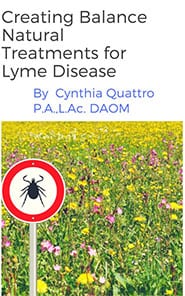Do you Thrive during Flu Season without getting Sick?
Although we are already beginning to see early sign s of spring it is does not mean we are near the end of the flu or viral season.
s of spring it is does not mean we are near the end of the flu or viral season.
Science has confirmed that common cold viruses don’t survive as well in warmer temperatures compared to colder temperatures. Essentially thermal heat suppresses their survival.
So by keeping the body heat higher especially by exercising regularly to encourage sweating, there may be a better chance at resisting an attack by the common circulating viruses. This also means keeping the core body temperature warm and avoiding exposures to cool drafts especially to the neck and chest areas.
It is impossible to avoid having a close encounter with a contagious virus.
Realistically, avoiding exposure to a contagious virus is nearly impossible. Often if there is someone sitting or standing near you in close enough proximity coughing or breathing, it’s a high risk exposure to contracting a contagious virus.
Ultimately, what we rely on the most to avoid getting sick is the strength of our immune system
If our immune system is strong enough to side track the path of the virus, symptoms can be avoided or at least minimized. There are many purported natural remedies to boost the immune system and combat the virus. Common recommendations include Vitamin C, herbal remedies like echinacea and elderberry and various types of homeopathic remedies.
Growing research has found that the one vitamin that repeatedly seems to sustain the protective effects of the immune system is Vitamin D3
It’s common to assume it would be easy enough to increase Vitamin D levels just by increasing our exposure to the sun.
But many reports show that sun exposure directly to the skin without sunblock can sometimes raise levels but only in fair skinned people under the age of 40. The season, time of day, length of day, cloud cover, smog, skin melanin content, age and sunscreen are among the factors that affect UV radiation exposure and vitamin D synthesis. And once the sun hits the skins surface, this synthesis relies on two complex biological pathways in the liver and the kidneys to convert the cholesterol in the skin to the active form of Vitamin D.
How do we know then if we are getting enough vitamin D?
There are few foods in nature that provide the active form of vitamin D3 (cholicalciferol). Fish, especially fish liver oil, like cod liver oil is the most concentrated. Fatty fish like salmon, cod, tuna and swordfish plus egg yolks contain natural vitamin D. Most diets don’t include enough of these foods to obtain adequate vitamin D3.
Other common sources like milk and cheese have been fortified with D2 (ergocalciferol) which is not the most potent form.
This leaves the best option to reach adequate levels of Vitamin D3 is by supplementation.
Ideally, to know just how much to take is best determined by having your blood level tested for 25-Hydroxyvitamin D [25(OH) D] or Vitamin D3. This would be your baseline. If it is low, higher levels of Vitamin D3 can be supplemented for at least 4-12 weeks and then decreased.
A repeat blood test is the best guide to know how much is an adequate maintenance dose.
On a blood test result, the reference range spans between (30 – 100 nmol/L). But, research has shown, any measurement below 50 nmol/L is too low to maintain bone growth; one of its most significant roles. Studies have shown its other important roles include modulation of cell growth, neuromuscular and immune function and reduction of inflammation. Many genes that regulate cell differentiation are also modulated in part by Vitamin D. This is an area of ongoing interest in cancer research.
Most health advisors recommend 25-Hydroxyvitamin D blood levels to be somewhere between 60-80 nmol/L for adults. Levels above 100 can cause toxicity and should be avoided.
How much Vitamin D3 should be supplemented on a daily basis?
Children under 8 years old can usually benefit from up to 1000 IU of Vitamin D3 daily. Children older and adults can benefit from higher doses sometimes ranging to as much as 10,000 IU daily if blood level measurements are low. Once the levels are normalized the dosage can be decreased to a lower maintenance amount.
If taking more than 5,000 IU of Vitamin D3, its best to take Vitamin K2 to help activate calcium absorption and bone growth. Some medications can interfere with Vitamin D3 absorption including steroids like prednisone, and cholesterol binding drugs like Xenical.
Don’t just think about supporting your immune system when you are having symptoms of getting a cold or virus. Include Vitamin D3 as a daily supportive nutrient to prevent illness and getting the flu.
.
Read about many beneficial effects of Vitamin D at www.vitamindcouncil.org
References:
Dowd, James E. and Diane Stafford (2012) The Vitamin D Cure. (Revised edition).
Institute of Medicine, Food and Nutrition Board. Dietary Reference Intakes for Calcium and Vitamin D. Washington, DC: National Academy Press, 2010.
Holick, Michael F. (2010) The Vitamin D Solution. A 3-Step Strategy to Cure Our Most Common Health Problems
Carter GD. 25-hydroxyvitamin D assays: the quest for accuracy. Clin Chem 2009;55:1300-02.


